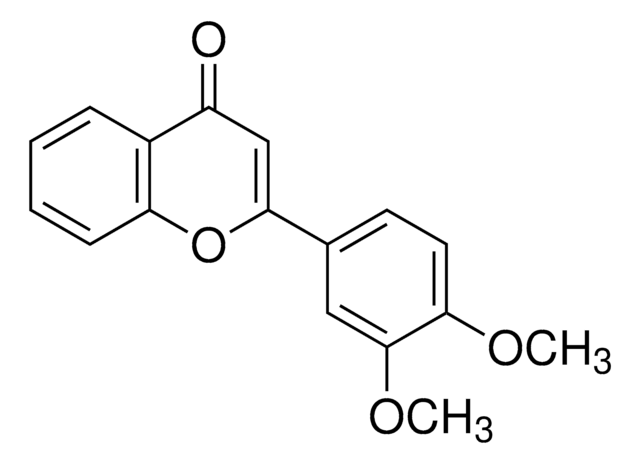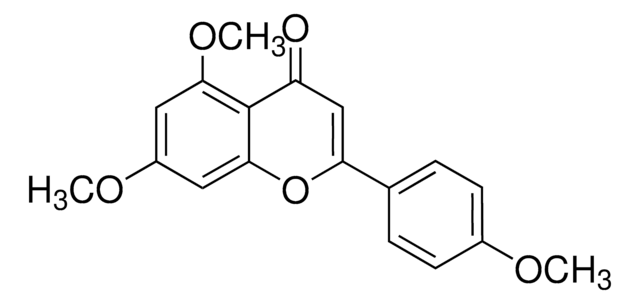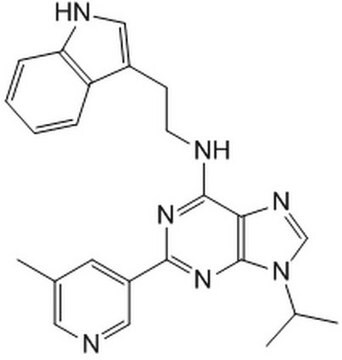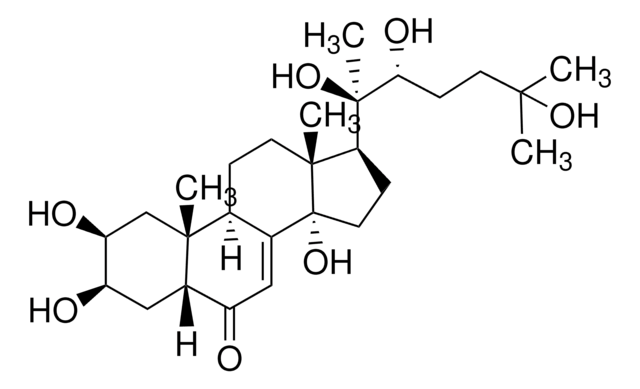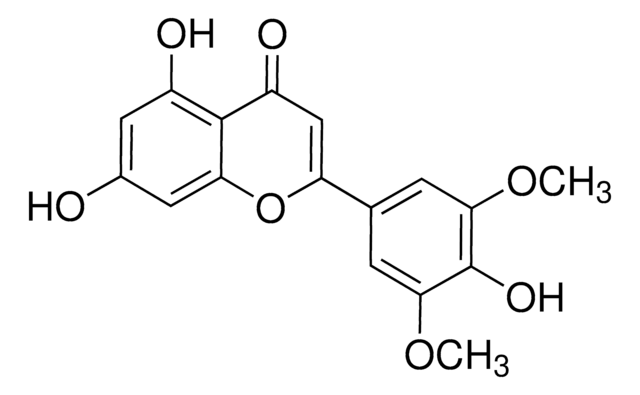Wichtige Dokumente
T4080
6, 2′, 4′-trimethoxyflavone
≥98% (HPLC)
Synonym(e):
2-(2,4-Dimethoxyphenyl)-2,3-dihydro-6-methoxy-4H-1-benzopyran-4-one, TMF, Trimethoxyflavone
About This Item
Empfohlene Produkte
Assay
≥98% (HPLC)
Form
powder
Lagerbedingungen
desiccated
protect from light
Farbe
yellow
Löslichkeit
DMSO: >5 mg/mL
Lagertemp.
room temp
SMILES String
COc1ccc(c(OC)c1)C2=CC(=O)c3cc(OC)ccc3O2
InChI
1S/C18H16O5/c1-20-11-5-7-16-14(8-11)15(19)10-18(23-16)13-6-4-12(21-2)9-17(13)22-3/h4-10H,1-3H3
InChIKey
WUWFDVDASNSUKP-UHFFFAOYSA-N
Biochem./physiol. Wirkung
Angaben zur Herstellung
Signalwort
Danger
H-Sätze
Gefahreneinstufungen
Acute Tox. 3 Oral
Lagerklassenschlüssel
6.1C - Combustible acute toxic Cat.3 / toxic compounds or compounds which causing chronic effects
WGK
WGK 3
Flammpunkt (°F)
Not applicable
Flammpunkt (°C)
Not applicable
Hier finden Sie alle aktuellen Versionen:
Analysenzertifikate (COA)
Die passende Version wird nicht angezeigt?
Wenn Sie eine bestimmte Version benötigen, können Sie anhand der Lot- oder Chargennummer nach einem spezifischen Zertifikat suchen.
Besitzen Sie dieses Produkt bereits?
In der Dokumentenbibliothek finden Sie die Dokumentation zu den Produkten, die Sie kürzlich erworben haben.
Unser Team von Wissenschaftlern verfügt über Erfahrung in allen Forschungsbereichen einschließlich Life Science, Materialwissenschaften, chemischer Synthese, Chromatographie, Analytik und vielen mehr..
Setzen Sie sich mit dem technischen Dienst in Verbindung.